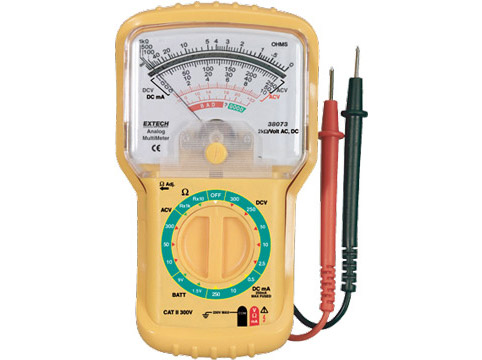A multimeter is a versatile electrical instrument used to measure various electrical parameters, such as voltage, current, and resistance. It's an essential tool for electricians, hobbyists, and anyone involved in electrical work.
Importance of Knowing How to Read a Multimeter
Understanding how to read a multimeter is crucial for diagnosing electrical issues, ensuring safety, and performing accurate measurements. Whether you're troubleshooting a circuit or checking battery levels, mastering this skill can save time and prevent potential hazards.
Key Components of a Multimeter
A typical multimeter consists of a display, selection knob, ports for test leads, and test leads themselves. Understanding these components is the first step in effectively using a multimeter.
Why Safety is Crucial
Working with electrical equipment can be dangerous if proper safety measures are not followed. Multimeters can handle high voltages and currents, which pose significant risks.
Basic Safety Tips
- Always read the user manual before use.
- Inspect and test leads for damage.
- Never use on live circuits unless it's rated for such use.
- Use appropriate personal protective equipment (PPE).
Choosing the Right Multimeter
Select a multimeter that suits your needs. For basic household tasks, a standard digital multimeter is sufficient. For more complex tasks, consider one with additional features like capacitance and frequency measurement.
Reading the User Manual
Before using a multimeter, read the user manual thoroughly. It provides important information on operating the device safely and effectively.

Common Symbols and Their Meanings
Multimeters feature various symbols representing different measurements. Familiarize yourself with symbols for voltage (V), current (A), resistance (Ω), and more.
Setting Up the Multimeter for Use
Turn the selection knob to the appropriate setting for the measurement you intend to take. Ensure that the test leads are connected to the correct ports.
Measuring Voltage
AC Voltage vs. DC Voltage
Voltage can be either alternating current (AC) or direct current (DC). AC voltage is commonly found in household outlets, while DC voltage is found in batteries.
Steps to Measure Voltage
- Set to the correct voltage type (AC or DC).
- Connect the test leads to the multimeter.
- Place the test leads on the circuit or component being tested.
- Read the displayed voltage.
Measuring Current
Difference Between AC and DC Current
Current can also be AC or DC. AC current alternates direction, while DC current flows in one direction.
Steps to Measure Current
- Set to the current setting.
- Break the circuit to connect the multimeter in series.
- Connect the test leads in the circuit path.
- Read the displayed current.
Measuring Resistance
What is Resistance?
Resistance measures how much a component opposes the flow of current. It's measured in ohms (Ω).
Steps to Measure Resistance
- Set to the resistance setting.
- Ensure the circuit is de-energized.
- Connect the test leads to the component.
- Read the displayed resistance.
Using the Continuity Test
Importance of Continuity Testing
Continuity testing checks if a circuit is complete. It's useful for finding broken wires or connections.
How to Perform a Continuity Test
- Set to the continuity setting.
- Connect the test leads to the circuit.
- Listen for a beep indicating continuity.
Testing Diodes and Transistors
Basics of Diodes and Transistors
Diodes allow current to flow in one direction, while transistors are used to amplify or switch electronic signals.
Steps to Test Diodes
- Set to the diode test setting.
- Connect the test leads to the diode.
- Read the forward voltage drop on the display.
Steps to Test Transistors
- Set to the transistor test setting.
- Connect the test leads to the transistor's terminals.
- Read the hFE (gain) value on the display.
Advanced Multimeter Functions
Capacitance Measurement
Capacitance measures a component's ability to store an electric charge. Set to the capacitance setting and connect the test leads to the capacitor.
Frequency Measurement
Frequency measures how often an AC signal cycles per second. Set to the frequency setting and connect the test leads to the AC signal.
Temperature Measurement
Some of them can measure temperature using a thermocouple. Connect the thermocouple to the multimeter and place it in the desired location.